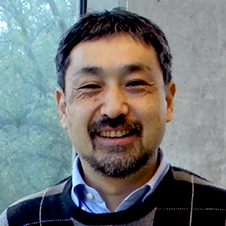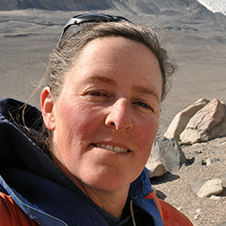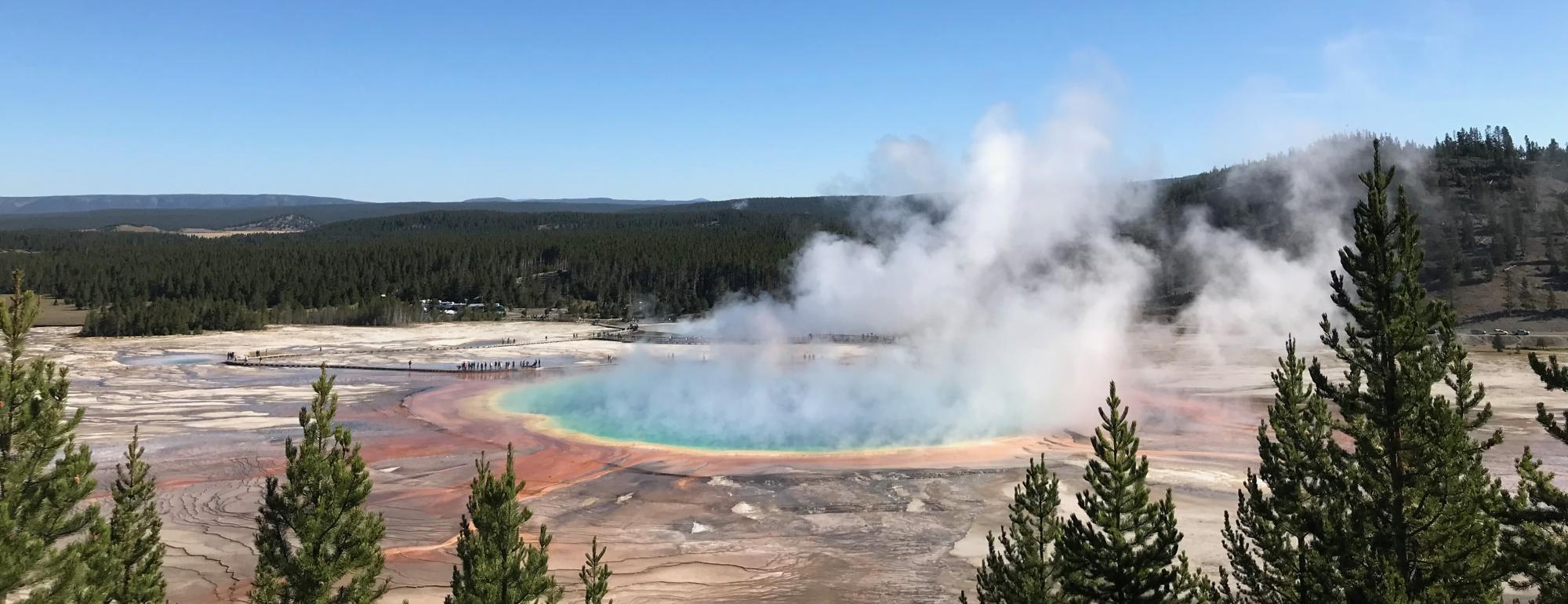The Geobiology and Paleobiology faculty study diverse aspects of the history of life, including invertebrate and vertebrate paleontology, functional morphology, geomicrobiology, evolutionary biology, phylogenetic inference, metagenomics and transcriptomics, paleoecology, paleobiogeography, paleoclimatology, and biogeochemistry. We focus on investigating patterns and processes in the evolution of life as well as testing hypotheses about the interactions among organisms, ecosystems, and environments both today and over geological time. Current research areas include probing the fossil record to better understand the dynamics and mechanisms of evolutionary processes, determining links between genotype and phenotype in organisms, investigating evolutionary innovations such as oxygenic photosynthesis and multicellularity, utilizing morphological phylogenetics, studying ecosystems over geological time, and adaptive trends in fossil and living skeleton-bearing animals and plants. Research in geobiology and paleobiology is highly collaborative with other groups on campus and in the region, including the Bodega Marine Laboratory and the departments and graduate groups of Evolution and Ecology, Entomology and Nematology, Environmental Science and Policy, Population Biology, Plant Biology, Integrative Genetics and Genomics, Microbiology, and others. Analytical facilities include immersive 3D visualization systems, SEM, stable isotope, trace element, and electron microprobe laboratories, as well as diverse “omics” analyses through the UC Davis Genome Center.
Faculty

Sandra J. Carlson | Professor
sjcarlson@ucdavis.edu | 530-752-2834
Systematics of fossil and Recent brachiopods (marine invertebrate animals), including phylogeny reconstruction and revision of brachiopod classification at several hierarchical levels. Use of stratigraphic data and genomic data in phylogenetic inference. Phylogenetic systematics and invertebrate paleontology. Stable isotopic variation in Recent and fossil brachiopod shells. Functional morphology of the brachiopod hinge mechanism. Biomineralization, growth, and diagenesis of "hard parts" - shells, bones, and teeth.

David Gold | Associate Professor
dgold@ucdavis.edu | 530-754-5361
Dr. Gold uses genetic and computational tools to explore the origins of complex life, particularly the evolution of animals across the Neoproterozoic/Cambrian boundary. Data from living organisms are integrated with the fossil record to better understand Earth-life interactions across deep timescales. Research areas include phylogenetics, next-generation nucleotide sequencing, and molecular clock analyses.

Tessa Hill | Professor
tmhill@ucdavis.edu | 530-875-1910
Research areas include marine micropaleontology, geological oceanography, and paleoceanography utilizing geochemistry of marine sediment and coral records. Tessa is also involved in interdisciplinary research to investigate the impacts of ocean acidification on coastal California environments. Research in her laboratory includes:
- Culturing of key species in the laboratory under controlled environmental conditions
- Monitoring modern pH variability on the Northern California coast using pH sensors and oceanographic transects
- Reconstructing climate variability utilizing geochemical proxies in foraminifera, corals, and other carbonates
- Investigating coastal environments to understand potential for carbon storage
 Ryosuke Motani | Professor
Ryosuke Motani | Professor
rmotani@ucdavis.edu |
530-754-6284Vertebrate Paleontology. Physics-based functional morphology, and its integration with systematics and phylogenetics to probe physical evolutionary constraints in evolution. Systematics and phylogenetics of Mesozoic marine reptiles, especially ichthyosaurs. His ultimate research interest is in how long-term changes in physical environments affect or drive the evolution of vertebrates. Vertebrates interact with their environment through body functions, so form-function relationship plays an important role in his research.
 Dawn Sumner | Professor
Dawn Sumner | Professor
dysumner@ucdavis.edu | 530-752-5353
Paleobiology research focuses on tracing the evolution of microbial communities throughout Earth history and the search for evidence of life on Mars. Her lab group is using modern cyanobacterial communities in Antarctic lakes as models for stromatolite growth as well as exploring their genomic composition to understand ecological processes. They are also using metagenomics to characterize organisms near the base of the cyanobacterial clade (including Melainabacteria) to understand the evolutionary processes leading to oxygenic photosynthesis.
Emeriti
 Howard Spero | Professor Emeritus
Howard Spero | Professor Emeritus
hjspero@ucdavis.edu | 530-752-3307
Research on living and fossil marine organisms as tracers of past environmental change. Research focuses on the biological and environmental parameters that affect the stable isotope and trace metal geochemistry of the shells of recent and fossil organisms; paleoclimatology, marine micropaleontology, and paleoceanography. An ongoing multi-year field research program involving undergraduate and graduate students has been studying living planktonic foraminifera in the Southern California Borderland and the Caribbean. The results of this study are being used to interpret fossil foraminifera stable isotope data from Indian and Atlantic Ocean deep sea cores in order to reconstruct paleoenvironmental sea surface temperatures, nutrient levels and CO2 concentrations during the Pleistocene.
 Geerat Vermeij | Distinguished Professor
Geerat Vermeij | Distinguished Professor
gjvermeij@ucdavis.edu | 530-752-2234
Marine ecology and paleoecology. The functional morphology of marine molluscs. The coevolutionary reactions between predators and prey, and their effects on morphology, ecology, and evolution. Biogeography and climate, and their reconstruction from paleontological evidence. The marine Mesozoic revolution. The paleobiogeography of the Arctic, and its influence on Atlantic and Pacific Cenozoic faunas. Molluscan taxonomy and phylogeny. Plant Defenses. Evolution and Economics.

